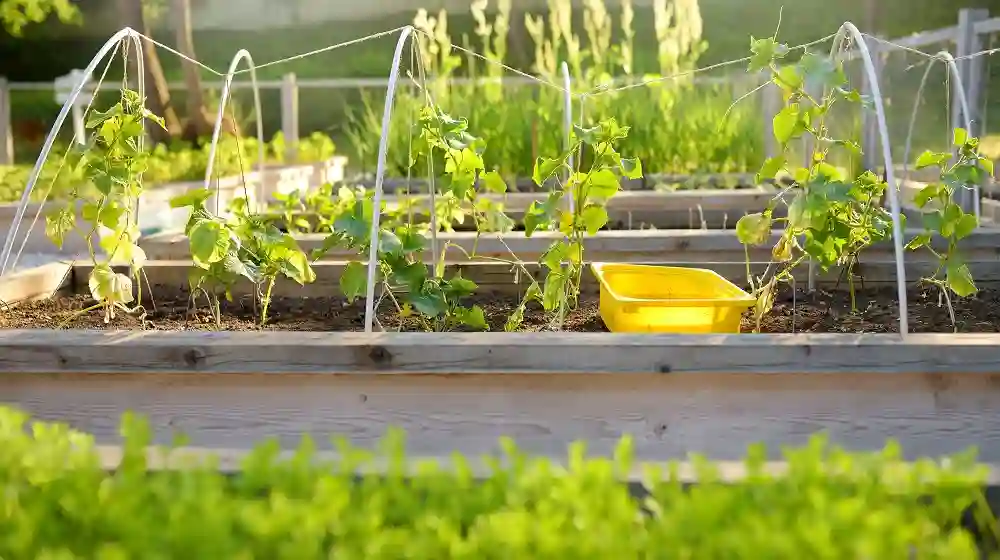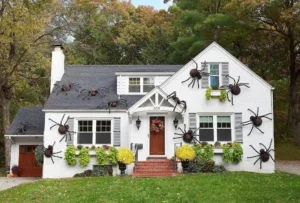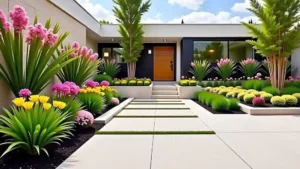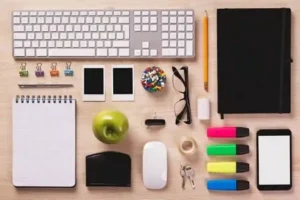How to Start a Thriving Home Garden from Scratch

Start a Thriving: Alright, let’s get into this. Starting a garden from scratch might sound a little intimidating at first, but trust me, it’s nothing you can’t handle. I’ve been through my fair share of failures and accidental plant deaths—looking at you, Gary, my first herb garden that went faster than my sourdough starter in 2020 (RIP). But seriously, I’m here to guide you through the process of starting a thriving garden, without any of that robotic, step-by-step nonsense. This is real life.
Why Start a Home Garden?
Look, when you’re about to start a thriving garden, it helps to know why you’re doing it. Here’s why it’s worth it:
- Fresh food: You can harvest your own tomatoes, cucumbers, and herbs from your backyard. And nothing feels quite as good as biting into a sun-warmed tomato you grew yourself.
- Save money: A bag of tomato seeds is cheaper than that fancy organic tomato at the store. Trust me, I learned that the hard way.
- Mental health: Gardening’s like therapy without the bill. There’s something about the act of planting, nurturing, and even the dirt under your nails that calms you down.
- Eco-friendly: If you want to cut down on food miles, you’ve got to start a thriving garden. Grow your own food, and you’re doing your part for the planet.
Fast forward past a couple of dead plants and a near-miss with my neighbor’s zucchini that’s definitely going to take over the world… Here we are—ready to get our hands dirty.
Picking the Perfect Spot
You can’t just toss seeds in the dirt and pray. That’s how I got a sad row of wilted, confused basil last year. No, you need to find the best spot possible to start a thriving garden. This is the real deal. Here’s the plan:
Sunlight, Baby
I didn’t know this at first, but plants are picky about their sun. And by picky, I mean they need it like I need coffee on a Monday morning. Most plants need 6–8 hours of sunlight per day to start a thriving life. If you’ve got a shady spot, well, maybe stick with ferns. Or some kind of secret shady plant cult.
Tip: I once tried to grow strawberries under a tree. Let’s just say the only thing that thrived was the neighborhood squirrel population.
Soil—Get It Right
Soil. It’s the bed your plants sleep in, and honestly, some of them are divas. Without good soil, you’re basically setting them up for failure. I tested my soil once, and it was so dry I thought I was trying to grow cacti. Spoiler: I wasn’t.
So if your soil’s not perfect, here’s the trick: add compost. Yes, compost. It’s like magic. (Literally, it’s organic material that helps your soil retain moisture, but I’ll let you think of it as fairy dust if that helps).
And, oops, forgot to mention: You need nitrogen-rich soil. Wait, no, was it potassium? Hold on—Googling that. Googles—yep, nitrogen. Got it. We’re good now.
Accessibility Matters
Listen, if you’re like me and your memory is as reliable as a wet napkin, you want your garden somewhere you’ll actually remember to water it. Don’t be that person who “forgets” their garden’s in the corner, covered in weeds. Y’all want a spot that’s close enough to walk to with a watering can but far enough from your dog’s “secret” bathroom spot.
What to Plant?
Ok, you’ve got your spot. Now what? Well, you’ve got to pick plants that won’t make you cry in frustration. Trust me on this one.
Start Small
When I first decided to start a thriving garden, I got too excited and planted everything—tomatoes, cucumbers, radishes, strawberries. Guess what? My tomatoes got jealous and choked out my cucumbers. It was like a botanical soap opera.
Pick simple plants. You know, the ones that are hardy and won’t judge you when you forget to water them. Start with:
- Lettuce – It’s like the overachiever of the garden world.
- Tomatoes – Go for cherry tomatoes; they’re easier to handle (they can’t give you attitude like full-size tomatoes).
- Herbs – Basil and mint are your new best friends. Don’t overthink it.
- Flowers – Marigolds are resilient. And fun fact: They’re natural pest deterrents. That’s what I call a win-win.
Climate Check
You’ve got to know your zone. (I’m talking USDA hardiness zones, not your social group’s “chill” zone.) If you’re in the Midwest, maybe skip the tropical plants unless you’re really committed to pretending you live in the Caribbean.
Soil Prep: A Dealbreaker
I can’t stress this enough—good soil is your garden’s BFF. And I learned the hard way that you can’t just throw some seeds in dirt and hope for the best.
Test Your Soil
Get a soil test kit. I promise it’s less dramatic than it sounds. Find out if your soil’s acidic, neutral, or basic. It’s all about pH balance. It’s not just your garden that needs it—your life might need some too. Anyway, once you know, amend accordingly. Compost works wonders.
Fixing Bad Soil
If your soil’s like mine was (dry, compact, sad), amend it with compost. You might even have to add some organic matter. Trust me, it’s worth the effort. Your plants will thank you later. I still remember the first time I saw my soil turn from dry and gray to rich and dark—it’s like watching your pet’s first successful zoomie. Wicked cool.
Watering: The Love Story
Watering. It’s the one thing we all forget to do. Or do too much. Either way, your plants are suffering.
Deep Watering
I know, I know, you want to water every day. Don’t. Instead, water deeply 2–3 times a week. That way, the water soaks in, and the roots get what they need.
Time of Day
Morning is the best time. You know how sweaty and miserable you get working in the heat? Plants feel the same. Let’s be kind to them.
Mulch It Up
Mulch keeps moisture in and weeds out. When I added mulch to my garden, it was like a miracle. Ok, maybe not a miracle, but it helped. A lot.
Harvesting: The Sweet Reward
Start a Thriving, Harvesting your plants is hands-down the best part of starting a thriving garden. If you’ve done it right, you get to enjoy the literal fruits of your labor (pun intended).
- Tomatoes: When they’re ripe and juicy, pick ‘em.
- Lettuce: Just trim the outer leaves, and it’ll keep growing.
- Herbs: Clip ‘em often to keep the plant growing and looking fresh.
Fun fact: I always think I’ve harvested enough basil, but the plant just keeps on giving. It’s like the Oprah of plants—“You get a leaf! You get a leaf!”
Troubleshooting: The Not-So Fun Part
Start a Thriving, If you’re anything like me, you’ll have your fair share of garden problems. But hey, it’s all part of the journey. Here’s what to do when things go south:
- Pests: Try natural solutions—like diatomaceous earth. Seriously, it’s like dusting your plants with something magical (but gritty).
- Yellow Leaves: Might mean you need more nutrients. Toss some compost on there and cross your fingers.
Wrapping Up
Listen, starting a thriving garden isn’t a walk in the park. But it is worth it. And I’m not just saying that because my garden finally outgrew the weeds. (RIP, my first attempt, though.)
You’ll have bumps in the road. Maybe your tomatoes will get too big for their britches and start bullying your herbs. But stick with it, learn from the mistakes, and you’ll soon have your own thriving garden to enjoy.
Anyway, get planting. Don’t forget to talk to your plants. Victorians believed talking to ferns helped with sanity. I’m not saying it works, but it can’t hurt, right?
4o mini







